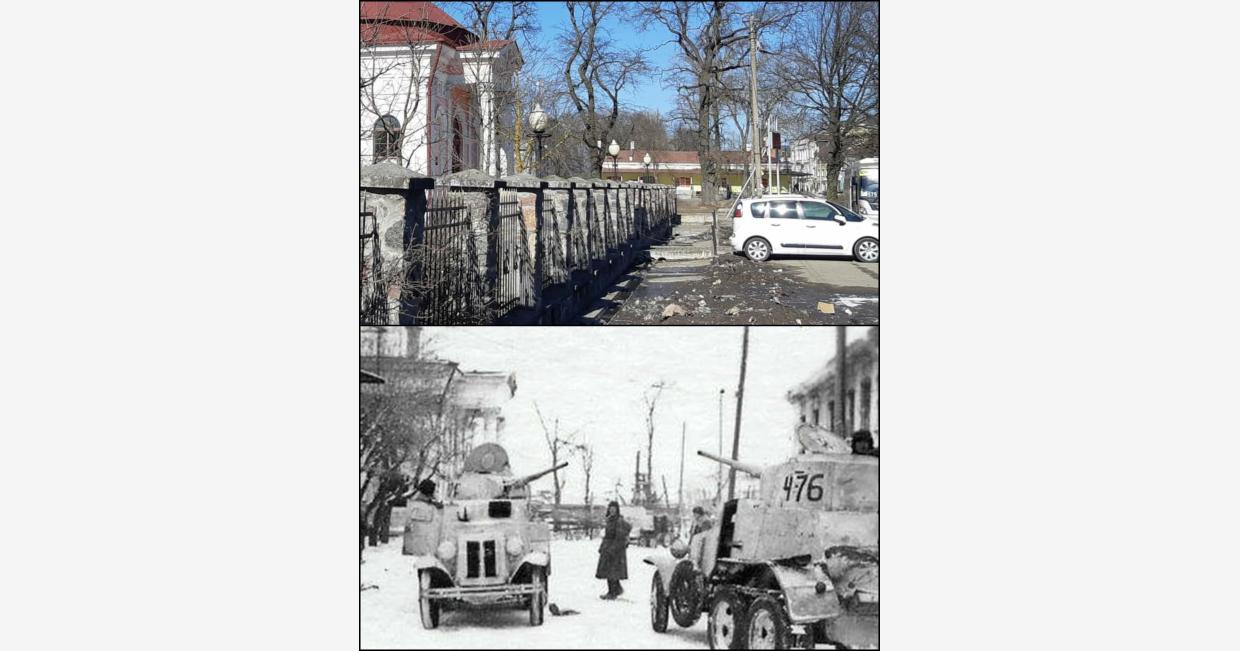Shlisselburg, Red Square. Late January 1943 / Shlisselburg, Red Square. Spring 2019.
BA-10 armoured cars on the streets of Shlisselburg. Take note of the special snow tracks around the tyres. Below is the picture of the same place I took today a few hours ago. The building on the right was demolished after the war, and the Chapel of the Icon of Our Lady of Kazan has just been restored.
From the diary of Lev Abramovich Khodorkov, chief engineer of the 8th State Regional Power Station. [During the war the station's concrete building was made into a heavily defended reinforced concrete strongpoint by the Germans].
Entry from January 22, 1943:
"I've just visited Shlisselburg. There was an hour long stop at a forest clearing. The Germans keep bombing us, I've seen the river crossing. Some artillerymen from Moscow. Felled high voltage transmission towers. New overhead lines from Shlisselburg to Morozova settlement on the right bank [During the siege a power cable was laid on the bed of the Ladoga lake, however power losses during underwater transmission were so high that once an overland corridor was established, it was decided to immediately build an overhead line by freezing poles into ice - Alexander Shmidke] Traffic controller on the ice. Neva. Its tall bank is covered with concertina wire coils. Up the hill, road turn - and here it is, Shlisselburg. [The town was liberated on the same day the siege of Leningrad was broken through, January 18th, 1943 - Alexander Shmidke] Remains of Shlisselburg. A line of brickwork ovens marks the area where houses used to stand. It still bears traces of combat: bullet casings scattered near every house, hand grenades, mines, a red haired German submachinegunner whose face is already covered with frost, cars smashed to bits right on the street.
Trophy teams dutifully bring everything to heaps on the street. Soldiers and officers are digging in them, selecting memento trophies. Here are the bodies of Red Army soldiers who were killed in combat, they are being pulled away on a sled. I examine German fortifications and their battalion HQ. The fire of our artillery obliterated everything. There are 300 residents remaining in the town - the women who did errands for German soldiers and officers."
